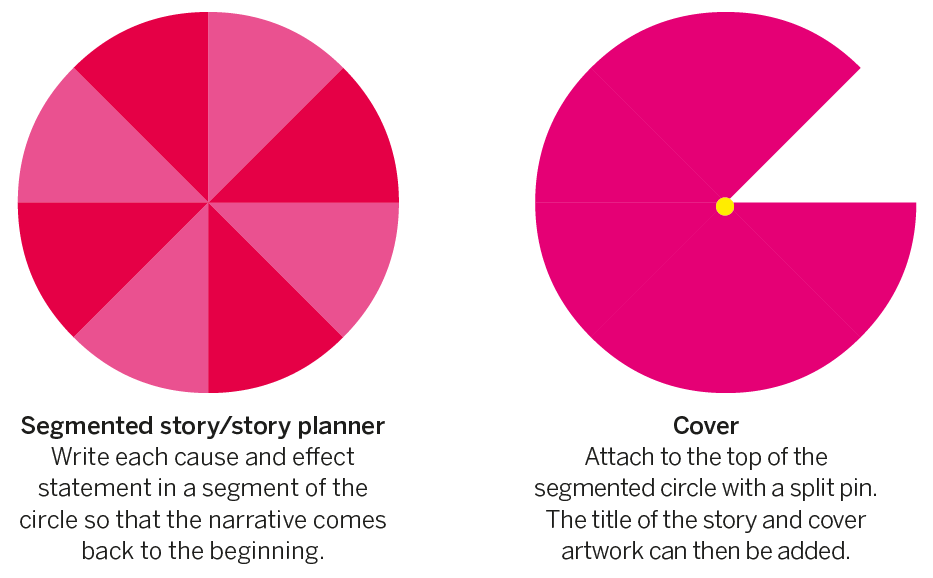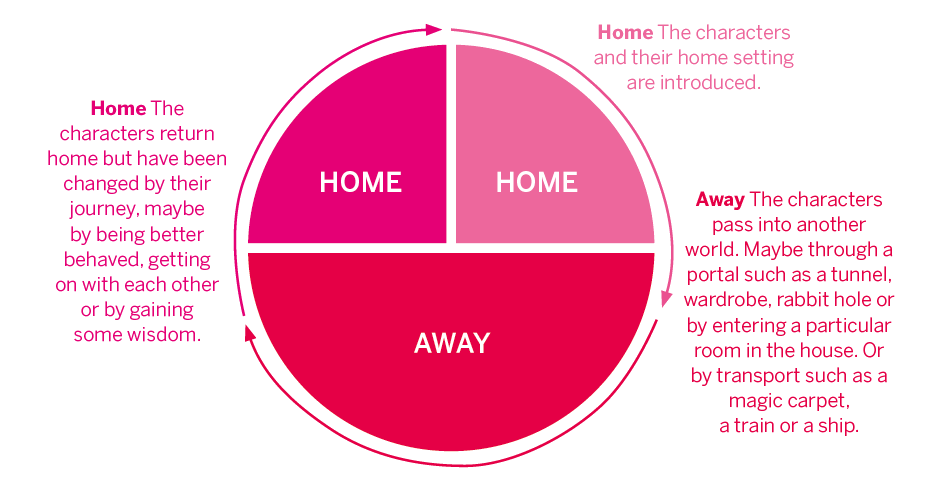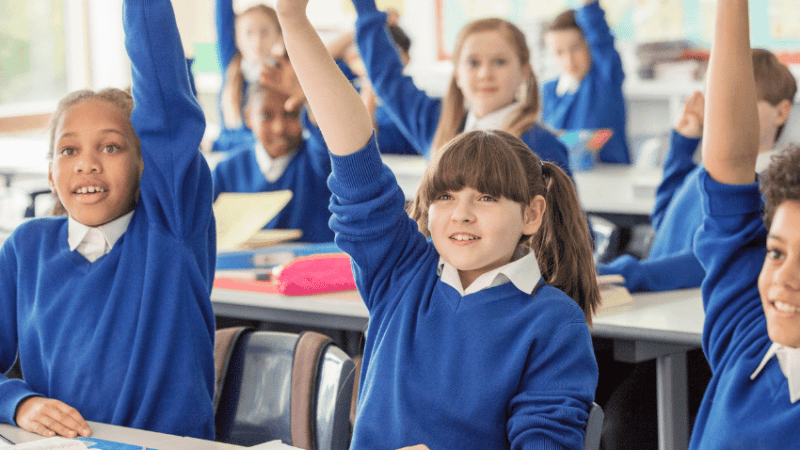Use circular stories to help children understand structure

Narratives that go round in circles can teach story structure in a simple and satisfying way, sparking creativity and innovative exploration of narratives, says Rachel Clarke…

- by Rachel Clarke
- Experienced educator, consultant and writer specialising in primary English Visit website

I’m not opposed to the story mountain. I appreciate it exemplifies narratives that rise to a high point before falling back to a conclusion.
But I find the language (conflict, climax, resolution, and so on) challenging to teach and not all of the stories I use as models for writing necessarily follow the story mountain template.
What’s more, in my experience not all children find the story mountain a helpful planning tool, meaning all too often it confuses rather than supports the structure of their writing.
Despite these frustrations, I’m not proposing to abandon the story mountain; it has a place in narrative writing. But in my opinion, it’s just one of many structures that can be used by children to shape their story writing.
Circular stories
If you’re looking for a very simple story structure, circular stories may offer what you’re seeking.
These start and end in the in the same way, making them extremely easy narratives to replicate.
Give a Mouse a Cookie by Laura Numeroff is a popular example that details the slippery slope of events that may unfold if you give a mouse a cookie.
Written as a set of causal statements, the book suggests that if you give a mouse a cookie, he’ll ask for a glass of milk. If you give him a glass of milk, he’ll ask for a straw to drink it through.
If you give him this, he’ll need a mirror to check his milk moustache and so on, until – you’ve guessed it – you’re back where you began: giving a mouse a cookie.
It’s a fun book and there are several more in the series if your class enjoy working with this one.
As you can see, there’s no build-up, climax or resolution to confuse young writers but there is a distinct ebb and flow of cause-and-effect actions that can be innovated upon by children to create narratives about other characters or settings.
A fun approach to innovating and planning circular stories is to use paper plates (or large pieces of circular paper) and split pins to create a story that is circular in appearance and effect.

Start by drawing lines on one of the plates so that there are six sections. Children should then write their cause-and-effect sentences in each section so that by the time the sixth segment is completed, the narrative comes back to the beginning.
Next, ask children to cut a segment out of another paper plate. They should then add the title of their story and some artwork, so that this paper plate becomes the cover for their story.
All the children need to do now is to attach the cover to the story plate with a split pin and rotate the open segment to tell their story section by section.
Home-away-home
…and they all went home for tea. We’ve all read plenty of children’s compositions that end with those seven words, and I’m the first to admit that I’ve been frustrated by them more than once, but unfairly so.
After reading Christopher Booker’s The Seven Basic Plots: Why We Tell Stories, I came to appreciate that what he calls ‘voyage and return stories’ (sometimes referred to as home-away-home stories) dominate children’s literature.
Trending
This simple structure sees the narrative start at home or another familiar setting, the main character or characters then cross into a world outside their normal setting and after an adventure in this new location, everyone goes back home: a circular story.
Well-known stories that use this structure are The Tunnel by Anthony Browne, The Lion, the Witch and the Wardrobe by CS Lewis, Alice’s Adventures in Wonderland by Lewis Carroll and Where the Wild Things Are by Maurice Sendak.

Just as with the circular story If You Give a Mouse a Cookie, the easiest way for children to write narratives using the home-away-home structure is to plan and write subtly different versions of a story already shared as a class.
By innovating a previously experienced story in this way, children will generate a story with a simple ‘beginning, middle, end’ structure where it’s entirely permissible that everyone comes back home for tea.
Home-away-home stories require a device that enables characters to travel between home and the ‘away world’.
There are two main devices: passage through a portal such as in The Tunnel or The Lion, the Witch and the Wardrobe, or the use of transport like a magic carpet (The Phoenix and the Carpet by E Nesbitt) or a train (The Polar Express by Chris Van Allsburg). Just as with If You Give a Mouse a Cookie, children can innovate on a home-away-home story shared as a class.
Or by exposing them to a range of similar stories, they can choose their own methods for entering and exiting their ‘away world’.
So, if your children are struggling with the story mountain, or if you’re looking for a bit of variety in the shape of their stories, why not have a go at writing circular or home-away-home stories.
And if you enjoy working with these story structures, you could have a go at some others such as linear stories, journeys and quest stories.
Other circular and home-away-home stories
Round Trip by Ann Jonas
A black and white book telling the story of a daytrip to the city. Get to the end, then turn the book upside down and read it the other way around for the return journey. This book uses some clever reverse illustrations that will fascinate and engage.
Grandad’s Island by Benji Davies
Syd loves spending time at Grandad’s house. One day, up in the attic, Grandad suggests they pass through a door. Once through, they board a ship and sail to a tropical island.
While there, Grandad says he’s unable to return with Syd, and so Syd returns to Grandad’s house alone. A beautiful story for younger children exploring the loss of a loved one.
Monsters in the Mirror by AJ Hartley
Suitable for children in Y6, Monsters in the Mirror is a modern twist on the voyage and return stories of Wonderland, Narnia and Oz. Darwen Arkwright travels between his home in Atlanta, Georgia, and the fantastical land of Silbrica and back again by passing through a magical mirror. Full of monsters, steampunk and technology, this is a high-octane story for older readers.
Rachel Clarke is the director of Primary English Education. She trains teachers all over the UK and beyond and is the author of Reading Detectives and Writing Mechanics both available from Collins. Find her at primaryenglished.co.uk and follow her on Twitter at @PrimaryEnglish.










